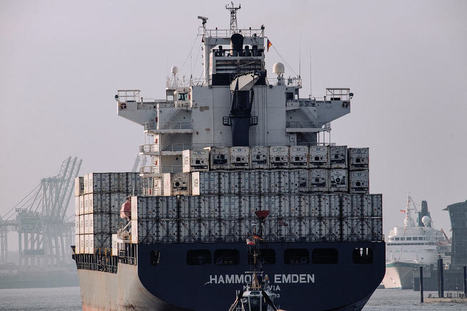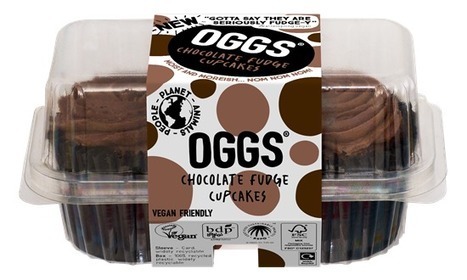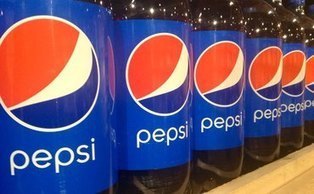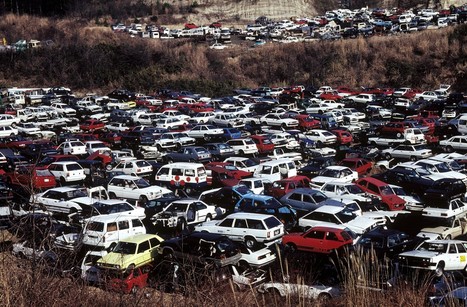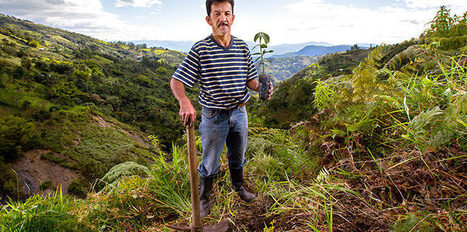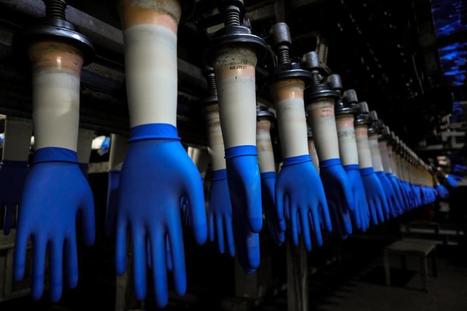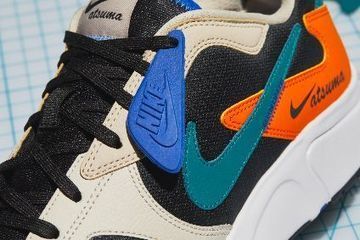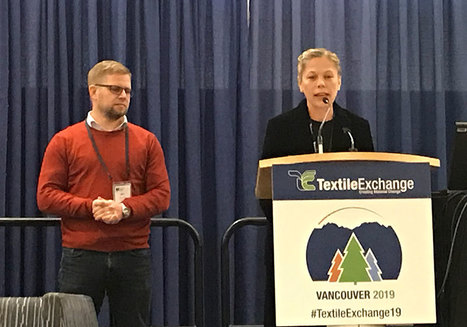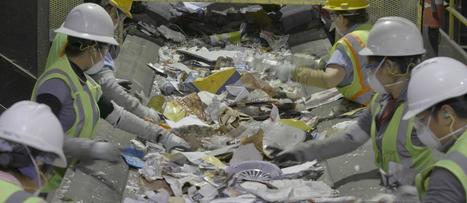 Your new post is loading...
 Your new post is loading...
Unilever Plc said on Wednesday it would invest 1 billion euros to eliminate fossil fuels from its cleaning products by 2030, cutting the carbon emissions created by the chemicals used in making the products.
The household goods conglomerate behind the Omo, Cif, Sunlight and Domestos brands said that, instead of petrochemicals, the products would use constituents created from plants and other biological sources, marine sources such as algae and waste materials.
Chemicals in its cleaning and laundry products make up 46% of its Home Care division's carbon emissions across their life cycle.
Via EcoVadis

|
Scooped by
PIRatE Lab
|
Covid-19 is a test of risk management processes and resilience in supply chains, says Prof Richard Wilding OBE, Cranfield University.
For the fourth time, the World Wildlife Fund (WWF), Solidaridad and the Pesticide Action Network (PAN) UK have analysed the largest cotton users (with around 10,000 tonnes of cotton/year) among international apparel brands and retailers according to their public objectives and policies, the share of sustainable cotton and transparency in their supply chain. The 2020 annual report assessed the performance of 77 of the largest-cotton using companies, up from 37 in 2017.
Leading this year is global sportswear manufacturer Adidas who was ranked sixth last year. Since then, the company has been buying only sustainable cotton, which pushed it up to the top of the ranking. Adidas is followed by Swedish furniture giant Ikea in second place and Swedish clothing chain H&M in third who also maintain 100 percent sustainable purchasing.
Via EcoVadis
Thermoforming manufacturer Macpac has produced a tray design and raw material solution to ensure bakers and food processors OGGS keeps its supply chain as sustainable as possible.
Via EcoVadis

|
Scooped by
PIRatE Lab
|
Sensors in Industrial Packaging
PepsiCo has priced its first ever green bond at $1bn, with proceeds from the issuance aimed at funding the food and drink giant's sustainability drive to slash greenhouse gas emissions, packaging waste,...
Via EcoVadis
Levi Strauss & Co. announced Thursday it is granting more than $380,000 to the second class of LS&Co. Collaboratory fellows who are working on innovations in the apparel supply chain that address issues related to climate change. The Collaboratory is a fellowship program for entrepreneurs working to create a more sustainable apparel industry. The program tackles different social and environmental sustainability challenges that are critically important to the future of the apparel industry and the environment. The first Collaboratory class in 2018 focused on water. The 2019 class focused on climate change.
Via EcoVadis
Oritain, a product and supply chain traceability specialist, has now mapped all Supima cotton growing regions with the aim of tackling fraud in the global cotton supply chain and enabling the first true authentication of premium cotton fiber.
Via EcoVadis

|
Scooped by
PIRatE Lab
|
Retailers are opening the door to collaboration with suppliers, creating opportunities to reduce environmental impact and improve the bottom line.
In spite of alternatives such as guayule and Russian dandelion, the Hevea brasiliensis tree will remain an important source of rubber for tyre manufacturers. The Goodyear Tire & Rubber Company recognises this and has announced a new natural rubber procurement policy. The tyre maker says this new policy “reflects its strong commitment to the responsible sourcing of raw materials” and believes its implementation and adherence will help address deforestation, land grabbing, and human rights in the areas of the world where natural rubber is produced.
Via EcoVadis

|
Scooped by
PIRatE Lab
|
If you asked Henry Ford, the Model T was good enough. In fact, it was pretty great. It was popular, dependable, and looked great in black, the only color offered at the time. If the car was selling…

|
Scooped by
PIRatE Lab
|
Insetting does more than just offset carbon emissions—it helps companies boost resilience and care for the ecosystems that provide their raw materials.

|
Scooped by
PIRatE Lab
|
|
Many of these medical elements currently use single use plastics or have some sort of sustainability challenge. Without doubt, the immediate focus should (and is) on meeting the impending need. Indeed, many innovative approaches are being used during this emergency in the very short term.
At the same time over the medium to longer term, many other companies are working on alternatives to plastics that could offer options to replace single-use plastics for medical purposes. Indeed, if the strict social distancing and stay at home measures introduced yesterday are successful, there will be a lot of surplus equipment after ‘Peak COVID-19,’ and a flattened curve.
Much of the discarded medical waste in the US is sterilized and taken to landfills in a regulated manner (incineration has been discouraged since 1997). However, other countries may not have as advanced bio-hazard waste protocols. This could potentially lead to a secondary environmental crisis with billions of small items of hazardous single use plastics ending up in waterways and oceans around the world.
Via EcoVadis
Although “this will not be easy,” multinational food and beverage firm Nestlé said it has joined the list of other big companies committing to eliminate use of virgin plastics by one third by 2025 as part of Europe’s first regional initiative toward a circular plastics economy.
A statement showed that Nestlé has signed the European Plastics Pact, initiated by France and the Netherlands, targeting to stop the region’s sole dependence on virgin plastics, which are made from non-renewable fossil fuel.
Via EcoVadis
A new Nike sneaker released this week (1 January) aims to reduce material waste by using scraps created during the production process.
Via EcoVadis

|
Scooped by
PIRatE Lab
|
For most people, reducing their carbon footprint means driving less, composting and recycling. But how about what's in their closets?
At the Textiles Exchange event being held here in Canada, the two retail giants told delegates how they ran over 8,000 tests on cotton textiles that were randomly collected from recyclers in Europe, finding that over 20 per cent of post-consumer samples contained APEO’s, around 10 per cent of the these samples also contained formaldehydes, with detectable levels of heavy metals, organotins, PAH (polyaromatic hydrocarbons) and phthalates also present. Actual detection rates were not disclosed.
“Recycled materials are key elements in a circular economy. However, increasing the use of recycled materials whilst ensuring that we keep these textiles free of toxic chemicals presents a challenge for the industry,” noted Anna Biverstål, Global Business Expert on Materials at H&M Group.
The two companies hope that other brands and retailers will join their efforts and say that the results will be disclosed freely for the industry to use as they branch out investigations into polyester and wool-rich textiles.
Via EcoVadis

|
Scooped by
PIRatE Lab
|
KCET's weekly news documentary series investigates and reports on the issues that affect Southern California, from the economy to the environment.

|
Scooped by
PIRatE Lab
|
The overpriced scraps of pre-landfill known as Trump Straws can actually tell us a whole lot about why our planet’s on fire.

|
Scooped by
PIRatE Lab
|
The selection of an alternative based on the results of a comparative environmental assessment such as life cycle assessment (LCA), environmental inpu…

|
Scooped by
PIRatE Lab
|
Richer countries import products but not the emissions used to make them.
AUDI AG has introduced sustainability ratings for its suppliers this April. The objective is that in the future, orders will only be placed with suppliers that obtain a positive rating. Audi is therefore increasing its commitment to achieving a sustainable value chain. The ratings are based on checks carried out at the suppliers’ production plants as well as on self disclosure.
Via EcoVadis

|
Scooped by
PIRatE Lab
|
Where do your coffee cups, clothes and household appliances go to die? New documentary Trash Trail traces the afterlife of consumer goods in Singapor
Tracing the origins of the graphite in a phone, for example, requires finding out where the phonemaker obtains batteries, where the battery makers acquire the portion of batteries known as anodes, and where the anode producers get their graphite. Moreover, because there are multiple suppliers at each step and various types of graphite, it is difficult to know where any given batch of the mineral ends up.
Several companies declined to disclose the origin of their graphite. For example, Tesla, perhaps the best-known electric-car maker, uses Panasonic batteries. Tesla said those batteries have never included graphite from the Chinese company BTR, but it declined to identify its graphite source.
Via EcoVadis
|



 Your new post is loading...
Your new post is loading...



